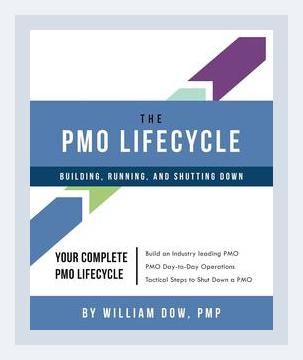Business StrategyStrategic Execution
Title: The PMO Lifecycle: Building, Running, and Shutting Down
Authors: Bill Dow, Bruce Taylor
Publication Year: 2010
Categories: Strategic Execution
Summary:
Introduction:
Bill Dow and Bruce Taylor’s book, The PMO Lifecycle: Building, Running, and Shutting Down, serves as a comprehensive guide on the lifecycle of a Project Management Office (PMO). The text spans strategic execution, encompassing best practices, real-world examples, actionable advice, and tools for building, managing, and closing a PMO effectively.
1. Building a PMO:
Key Points:
– Understanding PMO Types: Different organizations have varied needs from a PMO. It can be supportive, controlling, or directive, depending on the governance level required.
– Action: Assess your organization’s needs and determine the appropriate type of PMO.
- Strategic Alignment: A successful PMO aligns with the organizational strategy, ensuring projects contribute to broader goals.
-
Action: Conduct stakeholder interviews and strategic reviews to align the PMO’s objectives with the company’s strategic direction.
-
PMO Charter Development: The foundational step is creating a detailed PMO Charter that outlines its purpose, scope, governance structure, and performance metrics.
-
Action: Convene a task force with key stakeholders to draft and approve the PMO Charter.
-
Resource Allocation: Effective PMO initialization involves assigning roles, recruiting the right talent, and ensuring adequate resource allocation.
- Action: Create a resource plan mapping out the necessary human and financial resources required to kickstart the PMO.
Examples:
– At TechCorp, a supportive PMO was established to provide consulting and training services to project managers across the company.
– At HealthSys, the PMO implemented strategic reviews to ensure all health system projects aligned with their objective to improve patient outcomes.
2. Running a PMO:
Key Points:
– Project Portfolio Management (PPM): Cultivating a robust PPM process is crucial for prioritizing, selecting, and managing a portfolio of projects that align with strategic goals.
– Action: Develop a PPM framework that evaluates projects based on criteria such as ROI, strategic fit, and resource availability.
- Governance and Reporting: Establishing a governance model that defines decision-making authorities, project standards, and regular reporting is essential.
-
Action: Implement a governance board and set up regular review meetings to monitor project progress and address issues.
-
Performance Metrics and KPIs: Setting up meaningful KPIs and performance metrics to measure the effectiveness of the PMO and its contributions to the organization’s success.
-
Action: Develop KPIs that reflect project success rates, resource utilization, budget adherence, and client satisfaction.
-
Continuous Improvement: The PMO should regularly assess its processes and seek continuous improvement to maintain efficiency and relevance.
- Action: Conduct periodic process reviews and gather feedback continually from project teams to enhance PMO practices.
Examples:
– At FinTech Ltd., an effective PPM framework enabled the organization to balance high-risk, high-reward projects with steady, low-risk initiatives.
– A retail company set up a rigorous governance model that reduced project delays by 30% through better decision-making processes and accountability.
3. Shutting Down a PMO:
Key Points:
– Evaluating PMO Relevance: Over time, the need for a PMO may change. Periodic evaluations can determine if it remains aligned with corporate strategy.
– Action: Schedule bi-annual evaluations to review the PMO’s alignment with business objectives and its overall performance.
- Transition Planning: Closing a PMO requires a comprehensive transition plan to ensure projects and responsibilities are properly reassigned.
-
Action: Develop a detailed transition plan identifying key projects, their stakeholders, and the new owners of each project.
-
Documentation and Knowledge Transfer: Ensuring that all PMO knowledge and documentation are effectively transferred to the remaining organizational units.
-
Action: Assemble a transition team to oversee the documentation and handover processes, ensuring minimal disruption.
-
Communicating the Closure: It is essential to communicate the reasons for closure and the future plans clearly to all stakeholders to mitigate resistance and confusion.
- Action: Host a series of town hall meetings, distribute full communication plans, and maintain open channels for feedback and queries.
Examples:
– At an oil exploration company, a PMO shutdown was managed by setting up knowledge transfer sessions and ensuring comprehensive documentation for all ongoing projects.
– A government agency transitioning from an outdated PMO to a new project management structure leveraged detailed communication plans to ensure a smooth transition.
Conclusion:
The PMO Lifecycle encapsulates the critical steps for successfully establishing, maintaining, and eventually closing a PMO. Dow and Taylor emphasize the importance of adapting PMO initiatives to meet evolving business needs, highlighting strategic alignment, robust governance, and continuous improvement throughout its lifecycle. By adhering to the principles and actions presented, organizations can maximize their project management efficacy and achieve sustained strategic execution.
